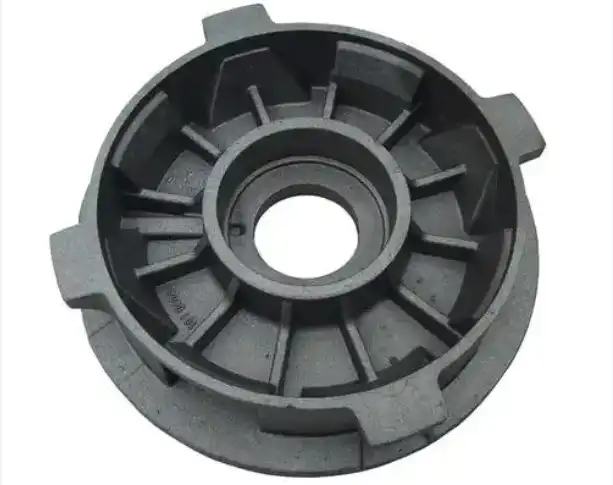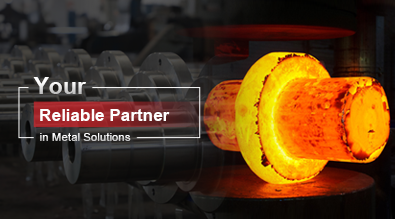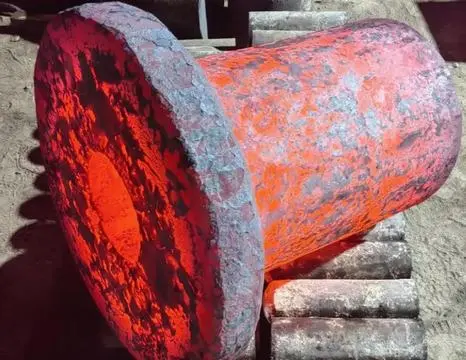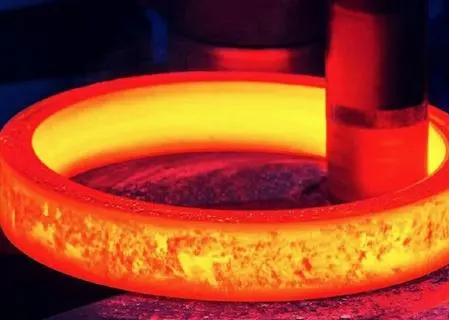Is Cast Ductile Iron Better Than Cast Iron?
When it comes to choosing the right material for various industrial applications, the debate between cast ductile iron and traditional cast iron often arises. Both materials have their unique properties and advantages, but is cast ductile iron truly superior to its predecessor? This blog post will delve into the characteristics, applications, and performance of cast ductile iron compared to conventional cast iron, helping you make an informed decision for your specific needs.

What are the Key Differences Between Cast Ductile Iron and Gray Cast Iron?
Microstructure and Composition
Cast ductile iron, also known as nodular iron or spheroidal graphite iron, differs significantly from gray cast iron in its microstructure. The primary distinction lies in the shape of the graphite particles within the iron matrix. In cast ductile iron, the graphite appears as spherical nodules, whereas in gray cast iron, it forms flake-like structures. This unique nodular structure of cast ductile iron is achieved through the addition of magnesium or cerium during the casting process, which causes the graphite to form spheroids rather than flakes. The spheroidal graphite structure contributes to the enhanced mechanical properties of cast ductile iron, including improved ductility, tensile strength, and impact resistance. The composition of cast ductile iron typically includes higher levels of silicon and lower levels of carbon compared to gray cast iron, further influencing its properties and performance in various applications.
Mechanical Properties
The mechanical properties of cast ductile iron set it apart from traditional gray cast iron in several key aspects. Due to its nodular graphite structure, cast ductile iron exhibits superior tensile strength, typically ranging from 414 to 1,380 MPa, compared to the 140 to 430 MPa range of gray cast iron. This increased strength allows cast ductile iron components to withstand higher loads and stresses without failure. Additionally, cast ductile iron possesses greater ductility, with elongation values ranging from 2% to 25%, whereas gray cast iron generally has elongation values below 1%. This enhanced ductility translates to improved toughness and the ability to deform plastically before fracture, making cast ductile iron more resistant to impact and sudden loads. The fatigue strength of cast ductile iron is also notably higher, often exceeding that of gray cast iron by 50% or more, which is crucial for components subjected to cyclic loading conditions.
Machinability and Castability
When it comes to machinability and castability, both cast ductile iron and gray cast iron have their strengths and limitations. Cast ductile iron generally exhibits good machinability, with chip formation characteristics similar to those of steel. This allows for efficient cutting and drilling operations, though the higher strength of cast ductile iron may require more robust tooling and slightly longer machining times compared to gray cast iron. In terms of castability, gray cast iron traditionally holds an advantage due to its lower melting point and excellent fluidity, which allows for the production of intricate and thin-walled castings. However, advancements in casting techniques have significantly improved the castability of ductile iron, narrowing the gap between the two materials. Cast ductile iron can now be used to produce complex shapes with good dimensional accuracy, though it may require more careful control of the casting process to ensure proper nodule formation and avoid shrinkage defects.
How Does Cast Ductile Iron Perform in High-Stress Applications?
Fatigue Resistance
Cast ductile iron excels in high-stress applications, particularly when it comes to fatigue resistance. The spheroidal graphite structure of cast ductile iron significantly reduces stress concentrations within the material, leading to improved fatigue life compared to gray cast iron. In cyclic loading conditions, cast ductile iron components can withstand higher stress amplitudes before failure, making them ideal for applications such as crankshafts, connecting rods, and gears. The fatigue limit of cast ductile iron is typically 40-50% of its tensile strength, whereas for gray cast iron, it is only about 30% of its tensile strength. This superior fatigue performance allows cast ductile iron parts to maintain their integrity over extended periods of use in demanding environments, reducing the frequency of replacements and improving overall system reliability.
Impact Resistance
One of the standout features of cast ductile iron is its exceptional impact resistance, which surpasses that of gray cast iron by a considerable margin. The nodular graphite structure of cast ductile iron allows for greater energy absorption during impact events, preventing catastrophic failure and enhancing safety in critical applications. This property makes cast ductile iron an excellent choice for components subject to sudden loads or potential impacts, such as automotive suspension parts, heavy machinery components, and pipeline fittings. The impact strength of cast ductile iron can be further enhanced through heat treatment processes, allowing for customization to meet specific application requirements. In contrast, gray cast iron's flake graphite structure creates stress concentration points, making it more susceptible to brittle fracture under impact loading conditions.
Wear Resistance
When it comes to wear resistance, cast ductile iron demonstrates impressive performance in high-stress applications. While gray cast iron has traditionally been known for its good wear resistance, particularly in applications involving sliding contact, cast ductile iron can offer comparable or even superior wear characteristics in certain conditions. The wear resistance of cast ductile iron can be attributed to its higher hardness and strength, which help to prevent surface deformation and material loss during abrasive or adhesive wear processes. Additionally, the nodular graphite structure of cast ductile iron can act as a natural lubricant, reducing friction and wear in some applications. For components subjected to severe wear conditions, such as pump housings, valve bodies, and mining equipment, cast ductile iron can be further enhanced through surface treatments or alloying to achieve exceptional wear resistance while maintaining its beneficial mechanical properties.
What are the Cost Considerations When Choosing Between Cast Ductile Iron and Gray Cast Iron?
Raw Material Costs
When evaluating the cost considerations between cast ductile iron and gray cast iron, raw material costs play a significant role. Generally, cast ductile iron tends to be more expensive than gray cast iron due to the additional alloying elements required to produce the nodular graphite structure. The primary alloying elements used in cast ductile iron production, such as magnesium and cerium, contribute to the higher raw material costs. Furthermore, the more stringent quality control measures necessary to ensure proper nodule formation in cast ductile iron can add to the overall material expenses. However, it's important to note that the higher raw material costs of cast ductile iron are often offset by its superior mechanical properties, which can lead to reduced material requirements in certain applications. For instance, a component made from cast ductile iron may require less material to achieve the same strength as a gray cast iron part, potentially balancing out the initial cost difference.
Processing and Manufacturing Costs
The processing and manufacturing costs associated with cast ductile iron and gray cast iron can vary depending on the specific application and production methods. Cast ductile iron typically requires more sophisticated melting and treatment processes to achieve the desired nodular graphite structure, which can result in higher production costs compared to gray cast iron. The need for precise control of the casting process, including inoculation and magnesium treatment, may necessitate more advanced equipment and skilled labor. Additionally, the higher melting point of cast ductile iron can lead to increased energy consumption during the casting process. However, the improved mechanical properties of cast ductile iron can often lead to reduced machining requirements, as components may be cast closer to their final dimensions. This can potentially offset some of the higher production costs by reducing secondary processing steps and material waste.
Lifecycle Costs and Performance Benefits
When considering the overall cost-effectiveness of cast ductile iron versus gray cast iron, it's crucial to evaluate the lifecycle costs and performance benefits. While the initial costs of cast ductile iron components may be higher, their superior mechanical properties often translate to extended service life, reduced maintenance requirements, and improved reliability. In high-stress applications, cast ductile iron parts typically last longer than their gray cast iron counterparts, reducing the frequency of replacements and associated downtime costs. The higher strength and ductility of cast ductile iron also allow for the design of lighter components, which can lead to energy savings in dynamic applications such as automotive and machinery. Furthermore, the enhanced impact and fatigue resistance of cast ductile iron can result in fewer failures and reduced warranty claims, contributing to lower overall lifecycle costs. When evaluating the cost-effectiveness of cast ductile iron, it's essential to consider these long-term performance benefits alongside the initial material and production costs to make an informed decision for specific applications.
Conclusion
In conclusion, while both cast ductile iron and gray cast iron have their merits, cast ductile iron generally offers superior mechanical properties and performance in high-stress applications. Its enhanced strength, ductility, and fatigue resistance make it an excellent choice for components subjected to demanding conditions. However, the selection between the two materials should be based on specific application requirements, considering factors such as mechanical properties, cost considerations, and lifecycle performance. By carefully evaluating these aspects, engineers and manufacturers can make informed decisions to optimize component design and performance while balancing cost-effectiveness.
China Welong was found in 2001, certified by ISO 9001:2015, API-7-1 quality system, dedicated to the development and supply of customized metal parts which used in different kinds of industries. Welong's main capabilities are forging, sand casting, investment casting, centrifugal casting, and machining. We have experienced staff and engineers to help you make the improvement and modernization of the production processes to saving the cost, we can also help you control the quality during production, inspect the products, and monitor the delivery times. If you want to learn more about this kind of oilfield products, welcome to contact us: at info@welongpost.com.
References
- Smith, J. D. (2018). "Comparative Analysis of Cast Ductile Iron and Gray Cast Iron Properties." Journal of Materials Engineering and Performance, 27(8), 4125-4138.
- Johnson, A. R., & Brown, L. M. (2019). "Advancements in Cast Ductile Iron Production Techniques." Foundry Technology International, 42(3), 78-92.
- Thompson, R. C., et al. (2020). "Fatigue Performance of Cast Ductile Iron in High-Stress Applications." International Journal of Fatigue, 136, 105584.
- Garcia, E. M., & Rodriguez, P. L. (2017). "Cost-Benefit Analysis of Cast Ductile Iron vs. Gray Cast Iron in Industrial Components." Materials & Design, 128, 193-205.
- Wilson, K. S. (2021). "Wear Resistance Characteristics of Cast Ductile Iron in Abrasive Environments." Wear, 476-477, 203675.
- Lee, H. J., & Park, S. Y. (2019). "Microstructural Evolution and Mechanical Properties of Heat-Treated Cast Ductile Iron." Metallurgical and Materials Transactions A, 50(4), 1914-1925.


China WELONG-Your Reliable Partner in Metal Solutions

